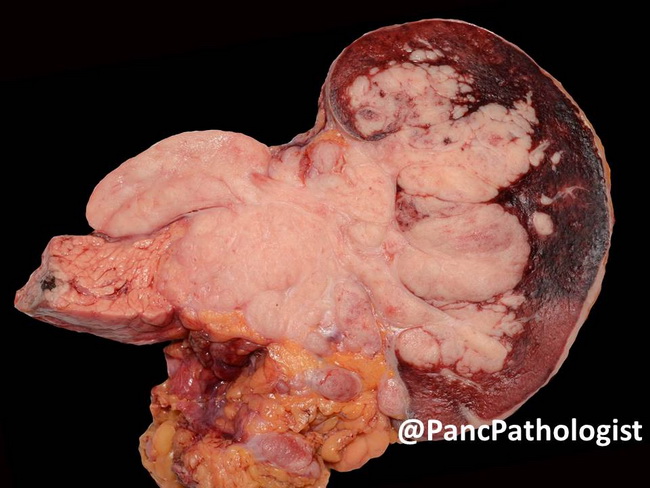PanNET : Gross Pathology


Comments:
GROSS PATHOLOGY: Non-functioning pancreatic neuroendocrine tumors (NF-PanNETs) are usually well-circumscribed, solitary and large tumors (mean size 4-6 cm). They can arise anywhere in the pancreas, although sporadic tumors are more common in the pancreatic head. The consistency can be soft and fleshy or hard and fibrous. Appearance depends upon the degree of vascularity and fibrosis and ranges from homogenous reddish-brown to tan to yellow-brown. Necrosis is uncommon. Areas of hemorrhage, calcification, or even ossification may be present. Some PanNETs are cystic and have a unilocular cyst filled with serous fluid surrounded by neoplastic tissue in the cyst wall. Cystic tumors are more often seen in MEN syndrome. These cases should be distinguished from PanNET arising within another type of a cystic pancreatic neoplasm. The larger tumors are often fleshy or variegated with a lobular or nodular appearance. Tumors located in the head of the pancreas may infiltrate into the common bile duct or duodenum (and cause obstructive jaundice). Tumors in the tail of the pancreas can invade peripancreatic soft tissues and spleen. Pancreatic neuroendocrine microadenomas are usually indistinct grossly because of their small size (<0.5 cm). About this image: Large PanNET in the tail of pancreas invading spleen and spilling over into peripancreatic soft tissues. Image courtesy of: Dr. Aatur Singhi (@PancPathologist); used with permission.



